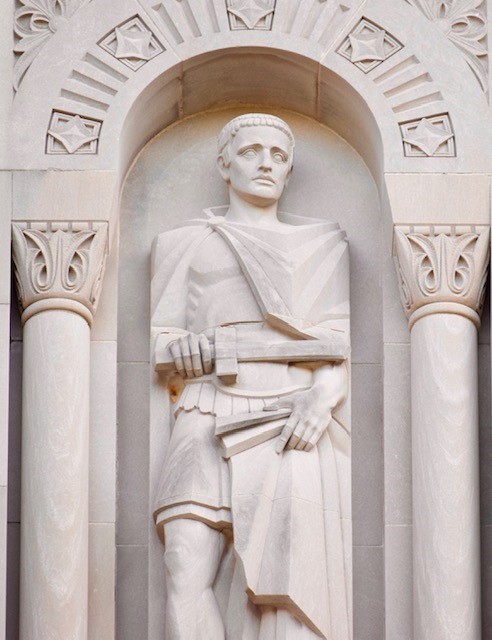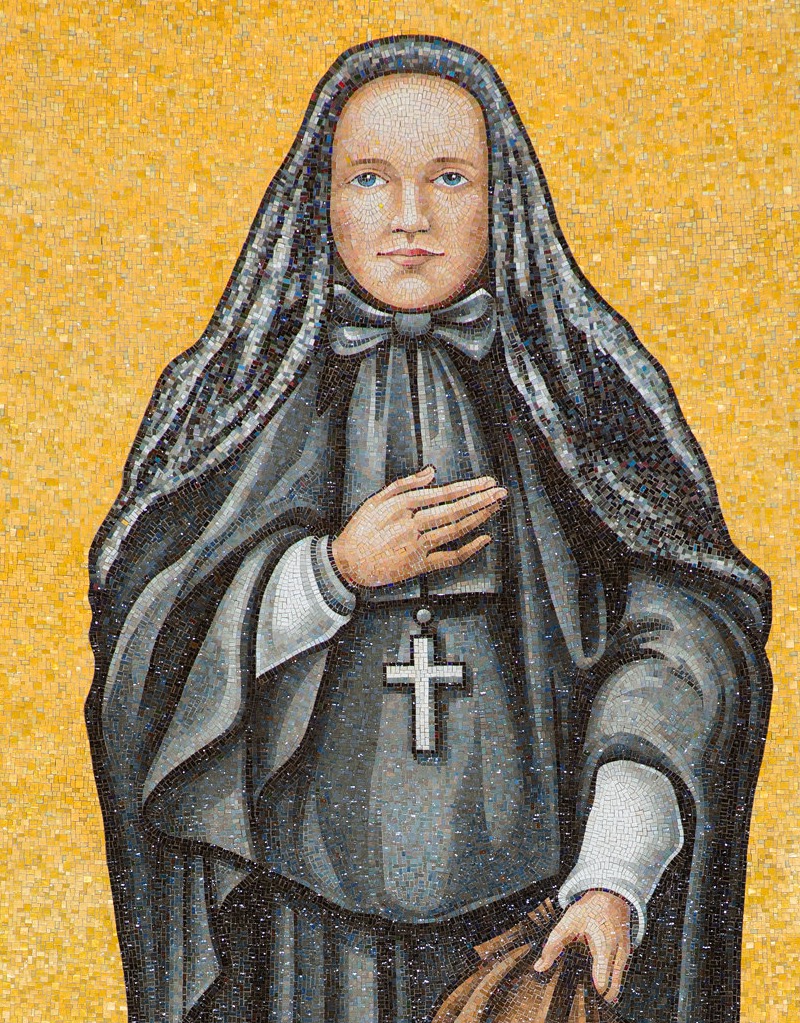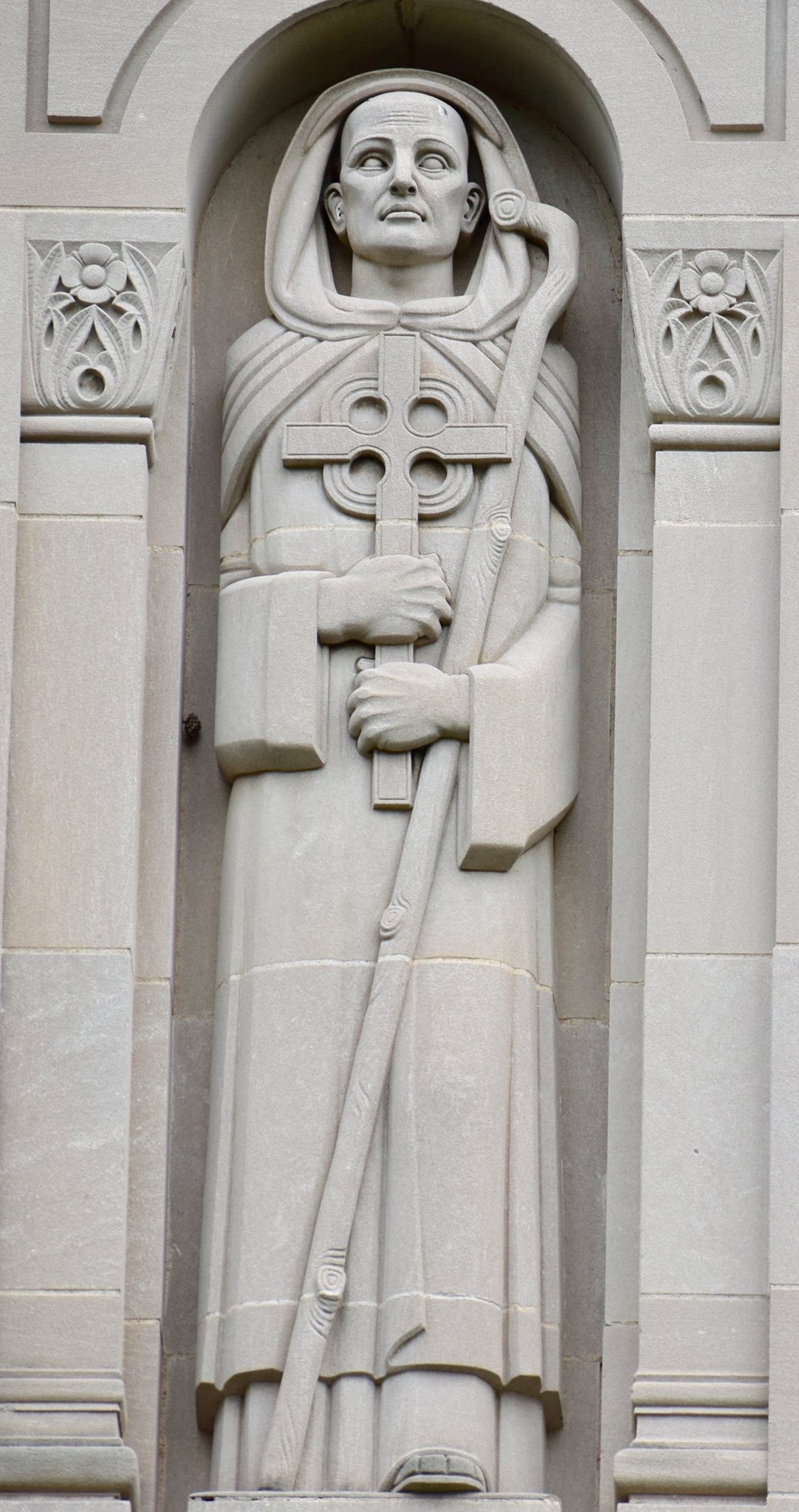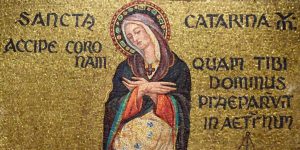
During the month of November, the Church celebrates many saints, honoring their unique contributions to the faith and reflecting on their examples of holiness. From passionate defenders of the faith like St. Catherine of Alexandria to brave missionaries like St. Frances Xavier Cabrini, these saints each have something to teach us. Read about five saints celebrated in November and why you should know their stories.
November 11 — St. Martin of Tours

Born in Hungary, St. Martin of Tours was drafted into the Roman army at the age of fifteen. But he soon grew uncomfortable with his military career, especially as he began learning about Christianity. The more he learned, the more he felt that it promoted a message of peace inconsistent with the life of a Roman soldier.
However, it wasn’t until his winter encounter with a beggar in Amiens, France, that Martin converted to Christianity. Upon seeing the beggar, Martin felt compelled to tear his cloak in two and give half to the man. Later that night, he had a dream that Jesus was wearing the other half of his cloak, which inspired him to become baptized immediately. Following his conversion, he remained in the army, but refused to fight and was imprisoned on charges of cowardice.
After his release, he lived as a hermit on an island in the Gulf of Genoa before founding the first monastery in Gaul. Despite his protestations, he was eventually made Bishop of Tours, but still lived the life of an unassuming monk. He was instrumental in reaching out to unchurched people in the countryside, bringing the Gospel to many who might not otherwise have heard. Today, he is honored as the patron saint of soldiers.
November 13 — St. Frances Xavier Cabrini

Often referred to as the mother of women’s missions, St. Frances Xavier Cabrini felt called to be a missionary from an early age. As a young girl in Italy, she would dress her dolls as nuns and send them down the river in boats as “missionaries.” She never lost her heart for missions, and at 27, approached a local bishop about the matter. At his suggestion, she founded the first institute for female missionaries: the Missionary Sisters of the Sacred Heart. Within a decade, it was recognized by Rome. When she was 30, she immigrated to New York City with six of her Sisters, intending to found orphanages in Little Italy. The plan was initially met with resistance from New York’s archbishop – primarily due to lack of funds. Regardless, Frances managed to secure $5,000 for the endeavor and was soon caring for over 400 orphans from the city streets. Later, she acquired 150 acres of land and established an orphanage in the countryside.
The Missionary Sisters of the Sacred Heart went on to found a variety of Catholic institutions throughout Europe and the Americas. In her lifetime, Frances traversed the ocean 39 times, founding over 60 missions across Europe and the Americas. In 1946, she became the first American citizen to be canonized. She is the patroness of immigrants.
November 18 — St. Rose Philippine Duchesne

On August 29, 1769, Saint Rose Philippine Duchesne was born in Grenoble, France. When she was 18, she joined the Convent of the Visitation of Saint Marie d’en Haut as a novice, and later joined the Society of the Sacred Heart of Jesus. There, she felt a deep calling to pursue missions; in a letter to her mother superior, she once wrote:
“I spent the entire night in the new World … carrying the Blessed Sacrament to all parts of the land … I had all my sacrifices to offer: a mother, sisters, family, my mountain! When you say to me ‘now I send you.’ I will respond quickly ‘I go.’”
Despite the sense of urgency she felt, Philippine was unable to pursue foreign missions until 12 years later. In 1818, Philippine finally traveled to St. Charles, Missouri, with five other women to found the first order of the Society of the Sacred Heart outside of France. The mission was not without challenges: Philippine had trouble learning English and interacting with the Native Americans, and also faced financial difficulties, but she persevered. She founded the first free school west of the Mississippi that year, and within the decade, founded six houses.
In 1852, Philippine passed away at age 83. She is honored in the Basilica in a statue in Memorial Hall and in the Trinity Dome mosaic. Called “the Woman-Who-Prays-Always” by the Potawatomi people, Rose Philippine Duchesne became the fourth citizen of the United States to be canonized in 1988.
November 23 — St. Columban

Born in Leinster, Ireland, in 543, Columban received a rigorous education and grew up to be a very attractive young man. Unfortunately, his winning appearance captured the attention of many young women, and he looked to religious life to maintain his purity, joining a monastery on an island in Lough Erne called Cluain Inis.
Columban continued in study and prayer, eventually making his formal vows as a monk at the Abbey of Bangor in County Down. He continued to live in contemplation until age 45, when he felt called to be a missionary, and went to Britain and France with 12 other men. Together, they founded monastic communities across Europe which were subject to his strict requirements of Irish asceticism.
In France, Columban clashed with government and spiritual authorities for bringing Irish religious customs into their region. While some accounts hold that he escaped after his criticism of Prince Thierry’s illicit relationship landed him in prison, others say that he was banished from the continent for his conflicting spiritual practices. Whatever the case, he set out for Ireland around 610, only to stay on the continent due to bad weather. God’s mission for him there, it seemed, was not finished: he continued to found more monasteries in Switzerland and Italy, meeting with less opposition than he had in France. His last monastery was founded in Bobbio in 614, one year before his death.
November 25 — St. Catherine of Alexandria

An intellectual defender of the faith, St. Catherine of Alexandria remained steadfast in an era of intense persecution. Tradition holds that she was born in Egypt under the reign of Maximian in the 3rd century. According to various texts, following the death of her mother, Saint Catherine of Alexandria devoted herself to a life of study. After seeing a vision of the Blessed Mother and converting to Christianity, Catherine pleaded with her suitor, Emperor Maxentius, to cease his persecution of the Christians. In response, he challenged her to debate 50 of his best philosophers, expecting an easy win. But her articulate defense of Christianity was so profound that many of them converted, as well as an estimated 200 soldiers and members of the royal family.
Angered by her victory and refusal to marry him, the emperor condemned her to death on a spiked breaking wheel, but at her touch, the wheel shattered. Tragically, she was beheaded ca. A.D. 305 in Alexandria, Egypt, but her powerful testimony still lives on today.
Sources:
Butler’s Lives of the Saints, ed. by Bernard Bangley.
Rohling, Geraldine M., PhD, MAEd. The Basilica of the National Shrine of the Immaculate Conception: Guide and Tour Book. Washington, D.C.: Basilica of the National Shrine of the Immaculate Conception, 2018.
“Saint Catherine of Alexandria,” Franciscan Media.
“St. Catherine of Alexandra,” Catholic.org.
“St. Columbanus,” Catholic News Agency.
The Way of Saints, Tom Cowan.

